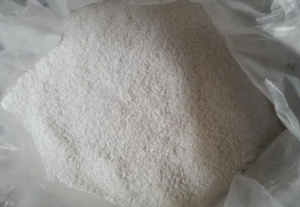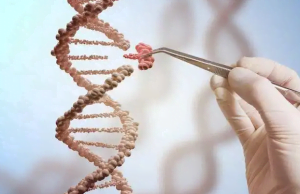SDS: Sodium Dodecyl Sulfate is a powerful detergent widely used in molecular biology, particularly DNA extraction. This versatile compound plays a crucial role in breaking down cellular membranes and denaturing proteins, enabling the isolation of nucleic acids from various biological samples. In this blog post, we’ll delve into the fascinating world of SDS and explore its significance in DNA extraction.
What is SDS (Sodium Dodecyl Sulfate)?
SDS is an anionic surfactant, meaning it carries a negative charge. Its molecular structure consists of a long, nonpolar hydrocarbon tail and a polar, negatively charged head group. This unique structure allows SDS to interact with and disrupt various biomolecules, making it an invaluable tool in the laboratory.

How does SDS work in DNA extraction?
The DNA extraction process involves several steps, i SDS plays a pivotal role in two critical stages: cell lysis and protein denaturation. Let’s explore each of these in more detail:
1. Cell Lysis
The cell membrane must be disrupted to access the genetic material within cells, a process known as cell lysis. SDS is highly effective in breaking down lipid bilayers, which are the primary components of cell membranes. Its hydrophobic tail interacts with the nonpolar lipid tails, while its negatively charged head group disrupts the electrostatic interactions that hold the membrane together. This results in the complete lysis of cells, releasing their contents, including the desired DNA.
2.Protein Denaturation
Once the cells are lysed, the released DNA is bound to various proteins, such as histones and enzymes. To isolate pure DNA, these proteins must be denatured and removed. SDS excels at this task because it disrupts the non-covalent bonds that stabilize protein structures. By binding to the hydrophobic regions of proteins, SDS unfolds them, exposing their internal regions and rendering them inactive. This process effectively separates the DNA from the denatured proteins, allowing for the subsequent nucleic acid purification.

Why is SDS important in DNA extraction?
SDS plays an important role in DNA extraction because it can lyse cells and denature proteins. Without this powerful compound, it would be challenging to efficiently release and isolate DNA from biological samples. Here are some key reasons why SDS is essential in this process:
- Effective Cell Lysis: SDS can disrupt even the toughest cell membranes, ensuring complete lysis and release of cellular contents, including DNA.
- Protein Denaturation: By unfolding and inactivating proteins, SDS separates DNA from its associated biomolecules, facilitating subsequent purification steps.
- Inhibition of Nucleases: SDS also inhibits the activity of nucleases, enzymes that can degrade DNA, protecting the integrity of the isolated genetic material.
- Versatility: SDS can be used for DNA extraction from various biological samples, including tissues, cells, and even forensic samples, making it a versatile tool in various fields.
- Reproducibility: The consistent performance of SDS in DNA extraction protocols contributes to the reproducibility and reliability of the results obtained.
SDS has become an important component in molecular biology laboratories worldwide. Its efficacy and versatility have made it a go-to reagent for researchers and scientists seeking to unlock the secrets of the genetic code.
What are the advantages of using SDS in DNA extraction?
While SDS is a powerful tool in DNA extraction, it also offers several advantages, making it a preferred choice among researchers. Here are some of the key advantages of using SDS in DNA extraction:
- Efficiency: SDS is highly efficient in lysing cells and denaturing proteins, ensuring a high DNA yield from various sample types.
- Reproducibility: The consistent performance of SDS in DNA extraction protocols contributes to the reproducibility and reliability of the results obtained.
- Compatibility: SDS can be used in conjunction with various other reagents and techniques, making it compatible with a wide range of DNA extraction protocols.
- Cost-effectiveness: Compared to some alternative methods, using SDSin DNA extraction is generally more cost-effective, making it accessible to researchers with limited budgets.
- Versatility: SDS can be used for DNA extraction from various biological samples, including tissues, cells, and even forensic samples, making it a versatile tool in various fields.
- Ease of use: DNA extraction protocols involving SDS are generally straightforward to follow, reducing the risk of errors and ensuring consistent results.
- Stability: SDS is a stable compound with a long shelf life, minimizing the need for frequent replacement and reducing potential degradation risks.
By offering these advantages, SDS has become a go-to choice for researchers seeking efficient, reliable, and cost-effective DNA extraction methods, contributing to advancing various fields, including genetics, forensics, and molecular biology.
What are some common applications of SDS in DNA extraction?
SDS is a compound with applications in various fields that rely on DNA extraction. Here are some common applications where SDS plays a crucial role:
- Genetics Research: In genetics research, SDS is used to extract DNA from various organisms, including plants, animals, and microorganisms, enabling the study of genetic diversity, evolution, and gene function.
- Forensic Science: Forensic scientists rely on SDS to extract DNA from crime scene samples, such as blood, hair, and other biological evidence, aiding in identifying individuals and solving criminal cases.
- Medical Diagnostics: In medical diagnostics, SDS is used to extract DNA from patient samples, enabling the detection of genetic disorders, infectious diseases, and other medical conditions.
- Environmental Studies: Researchers in environmental studies use SDS to extract DNA from environmental samples, such as soil, water, and air, to study the diversity and distribution of microorganisms and their potential impact on ecosystems.
- Biotechnology: In biotechnology, SDS is employed to extract DNA from various sources, including bacteria, yeast, and other microorganisms, producing recombinant proteins, enzymes, and other valuable biomolecules.
- Phylogenetic Studies: SDS is a valuable tool in phylogenetic studies, where DNA extraction from diverse organisms is essential for constructing evolutionary relationships and understanding the origins and relationships between different species.
These are just a few examples of the many applications where SDS plays a vital role in DNA extraction, highlighting its importance in various scientific research and practical applications.
Conclusion
SDS is a powerful and versatile compound that plays a crucial role in DNA extraction. Its ability to lyse cells and denature proteins makes it an indispensable tool in molecular biology laboratories worldwide. By understanding the science behind SDS and its applications, researchers can continue to use this remarkable compound to unlock the secrets of the genetic code and drive scientific discoveries across various fields.
